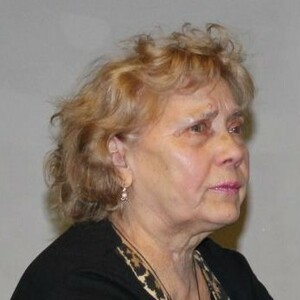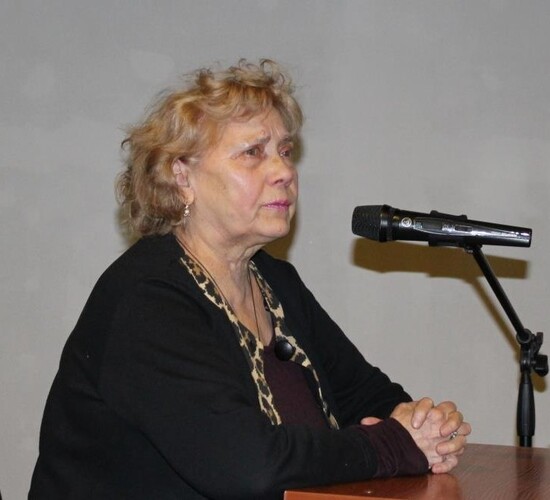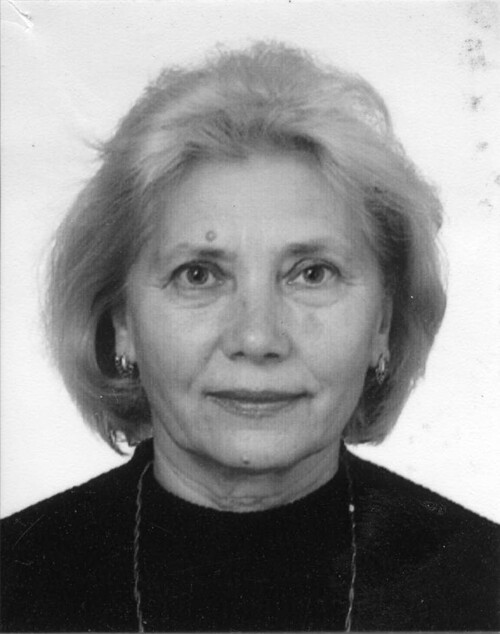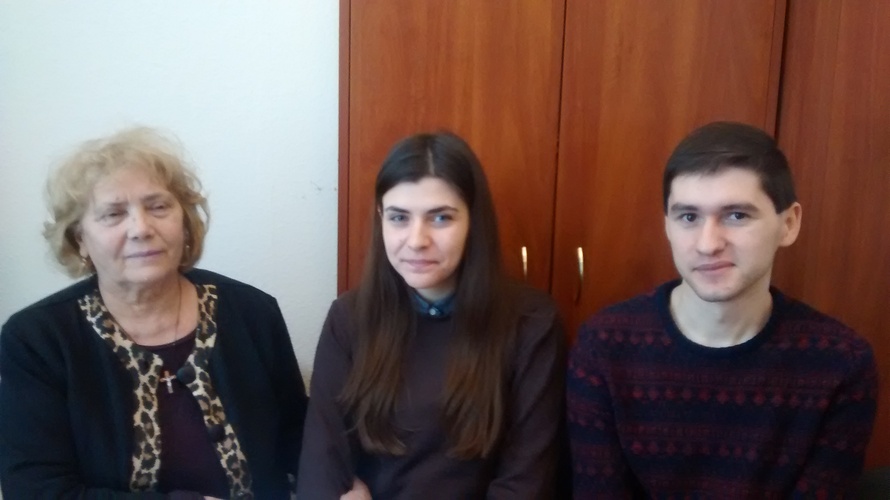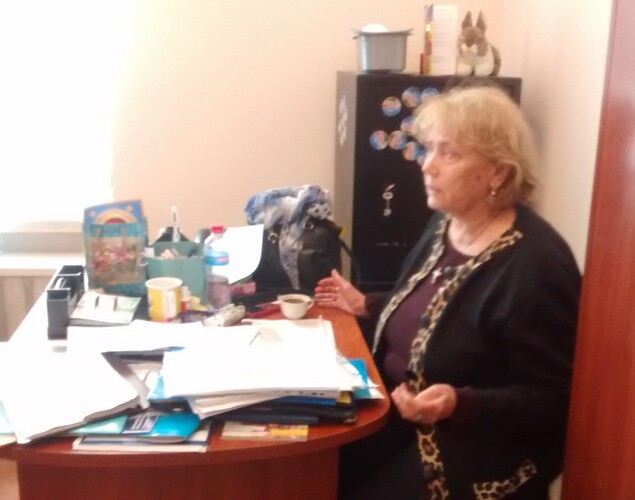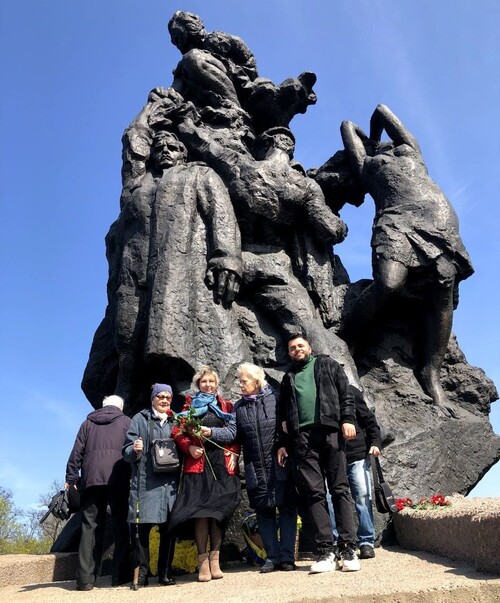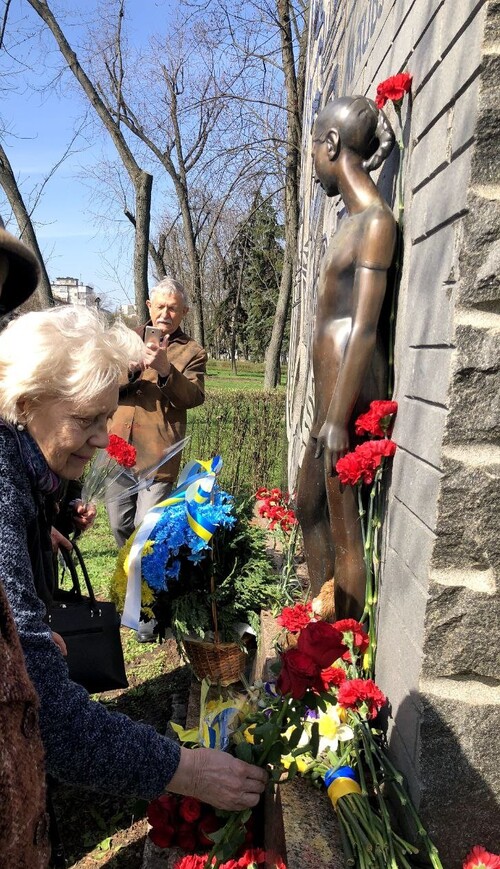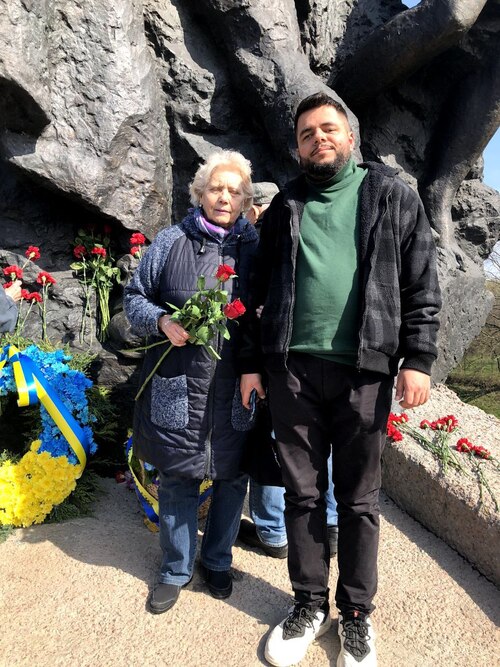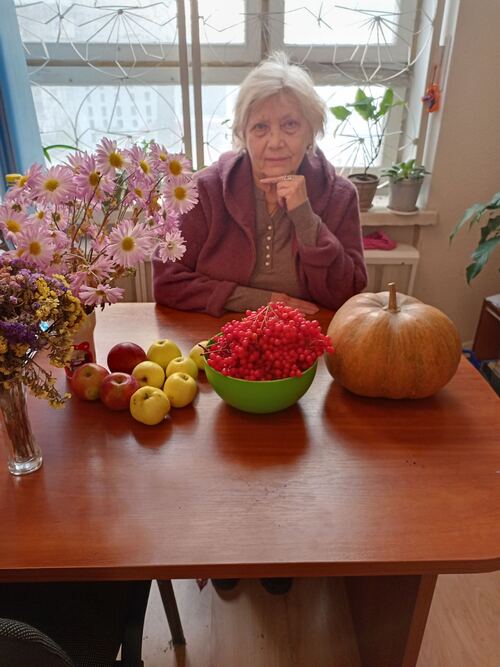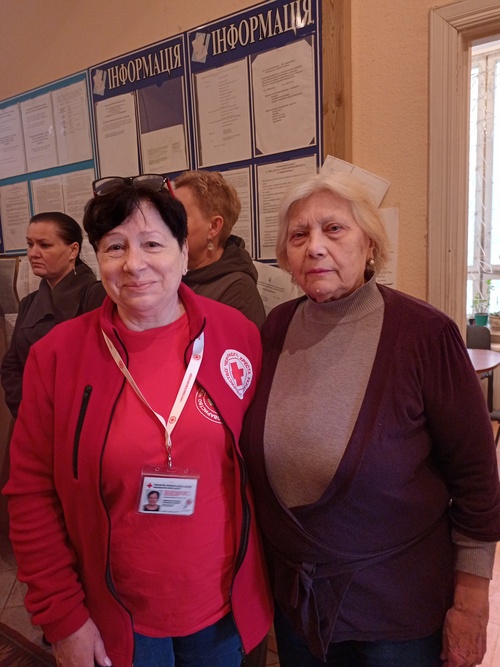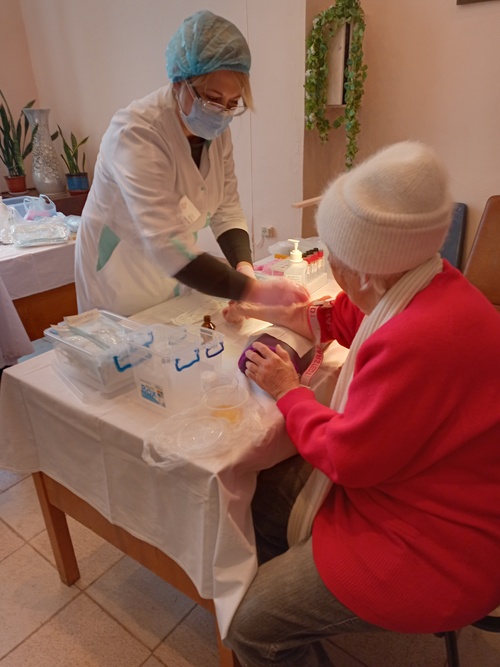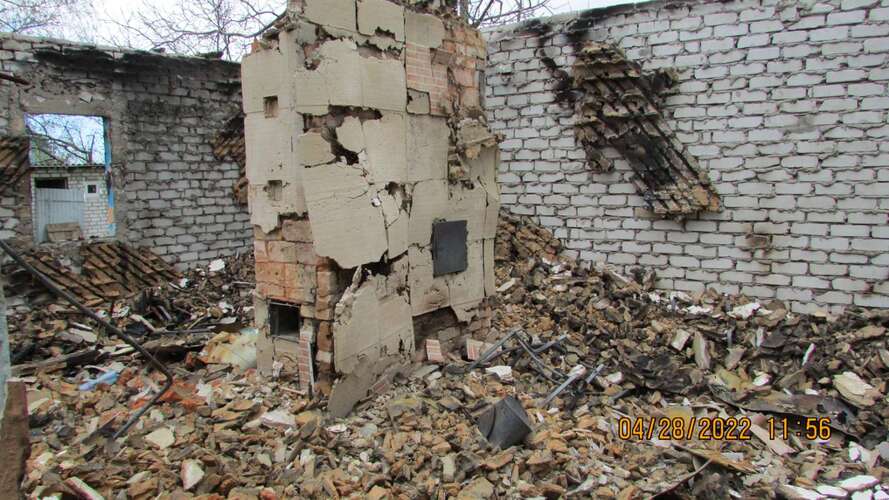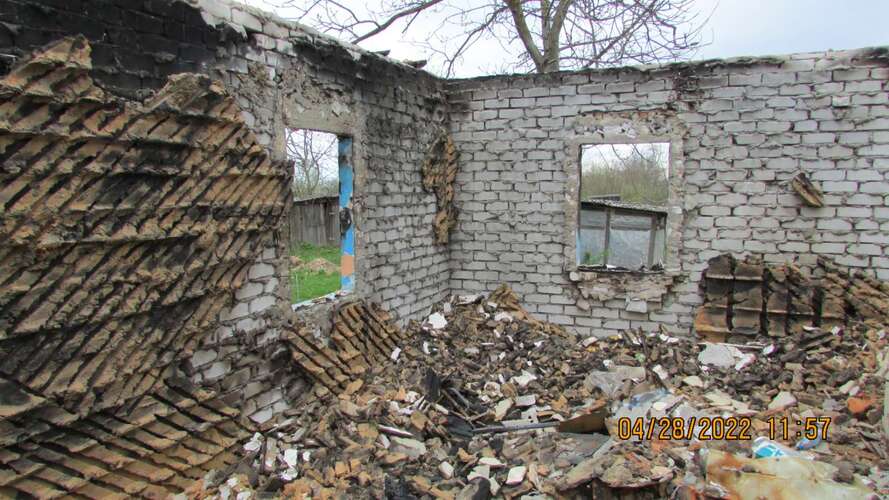Nadia Vasilivna Mudrenok (née Galatenko) was born in 1938, in the village of Yadlivka in the Nova Basan Raion, Chernihiv Oblast (now Peremoha, Baryshivka Raion, Kyiv Oblast). She had three siblings.
War came to her family directly following the German invasion of the Soviet Union: In 1941, her father was drafted into the Red Army and served in the 300th Infantry. He was then captured and held in the Darnitsa POW camp. Nadia recalls how her mother visited him in the camp: “She gathered up what she had to eat and went on foot to the camp. It was 50 kilometres from our village.” Upon her arrival, her mother witnessed the terrible conditions the prisoners were in. The next time she visited the camp, he was no longer there. He had been sent to an unknown location, along with 300 other prisoners. To this day, his family are unclear what happened to him. According to Memorial’s database, he died on February 7, 1942, and was buried in the Kharkiv Oblast.
In August of the following year, Nadia and her family saw their village destroyed. She recalls the incident: “Suddenly SS men on motorcycles enter the village…The village was set on fire from all sides. Those who tried to escape were shot.” The family was forced to march for days under the guard of SS men with dogs and machine guns. They reached Brovary, where they were interned in a former NKVD children’s educational colony that had been converted into a camp surrounded by barbed wire. They endured horrendous living conditions there for the next two months. For example, dysentery was widespread, as the same barrels of water were used both the bathe children, as well as prepare food for the prisoners.
In early October 1943, Nadia and her family, along with 160 fellow villagers, were loaded onto wagons and taken to the Artyom Street transit camp in Kyiv. From there the German authorities decided to send the family to Germany for forced labour. Nadia remembers the train journey westward: “There were two SS men standing on the doors of the car. They played harmonicas around the clock. And we rode in this carriage and slept and excuse me, defecated.” Upon arrival, the family was interned in different locations before they were taken to a camp in the province of Brandenburg, located between Briesen and Alt-Madlitz, where they stayed for almost two years.
This camp had previously held Soviet POWs, but was later used for civilians, including many children under the age of fourteen. All the adults in the camp went to work every morning: some worked on the railroad, at the airport, others collected stones in the field. Sometimes they managed to steal frozen beets and potatoes, and to smuggle them back to their children waiting in the barracks. This was a special treat, as the rations in the camp were less than ideal – normally they would be fed beans, rutabaga, and bread, which Nadia describes as brick-like and made of sawdust. The children were left unsupervised during the day, while the adults were at work. They spent most of this time trying to evade the head of the camp, who was verbally and physically abusive towards the prisoners. Nadia recalls:
“He yelled at us all the time: ‘Kleine russische Schweine!’ Therefore, as soon as we heard a noise in the barracks, we all hid under the bunks like rats.”
The camp was liberated by the Red Army that advised the prisoners get away from the front lines. They set off walking for days, through forests and fields, until they happened upon a convoy of vehicles. The former prisoners were then loaded onto trucks and taken to a Soviet filtration camp, where the authorities attempted to ascertain their political loyalty and root out potential spies. Here, Soviet secret service officers (or SMERSH officers) conducted interrogations and created dossiers on everyone. Nadia recalls her time in the camp with ambivalence: on the one hand, the family was surrounded by barbed wire once again; on the other, the soldiers fed them properly.
The family’s return to Ukraine was delayed when Nadia fell ill at the filtration camp, first with typhus, and then with tuberculosis. In January 1946, they arrived in the village of Bobryk, where Nadia’s uncle Kindrat picked them up. Upon arrival, they were confronted with scenes of devastation: their house was burnt down, and everything was deserted. They experienced hunger and diseases, some of which were the consequence of their internment in the German labour camps. For example, Nadia continued to suffer from tuberculosis, one of her sisters was ill from an autoimmune disease, and her younger brother became suffered from the long-term effects of malnutrition.
Slowly, life started to improve for the family in peacetime. Nadia moved out on her own at the age of fourteen and went on to study mechanical engineering at Kyiv Mechanical College. She worked for decades as an engineer at the Arsenal Factory, up until her retirement in 2001.
Today, she heads the district section of the Former Victims of Nazism in Kyiv-Pecherskyi. Despite Russia’s full-scale war of aggression against Ukraine, Nadia remains in the city: she has set to work organizing assistance and handing out hot meals to the most lonely and vulnerable members of her organization, as well as other city residents in need. Her family home in her native village of Peremoha has been destroyed in the fighting – she has also vowed to rebuild it.
Written by Anna (Warsaw), Marie (Göttingen), Oksana (Chernihiv)
